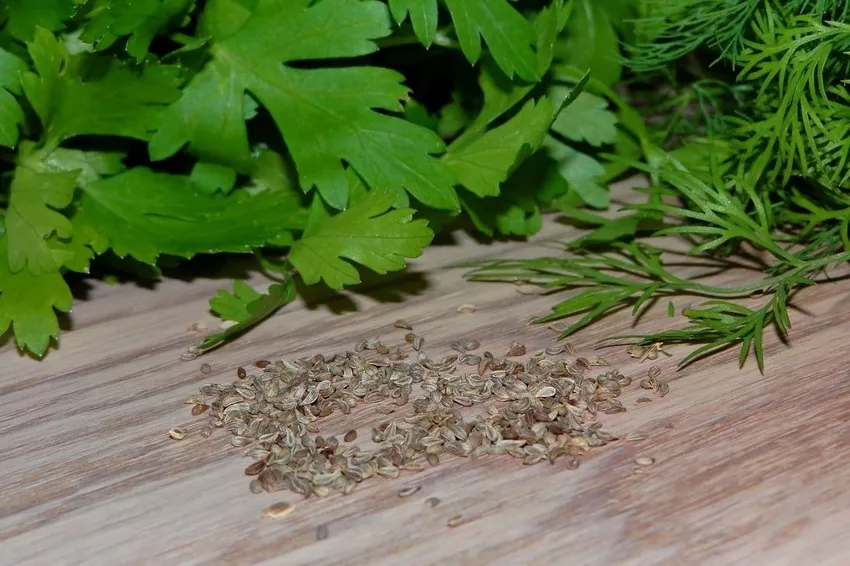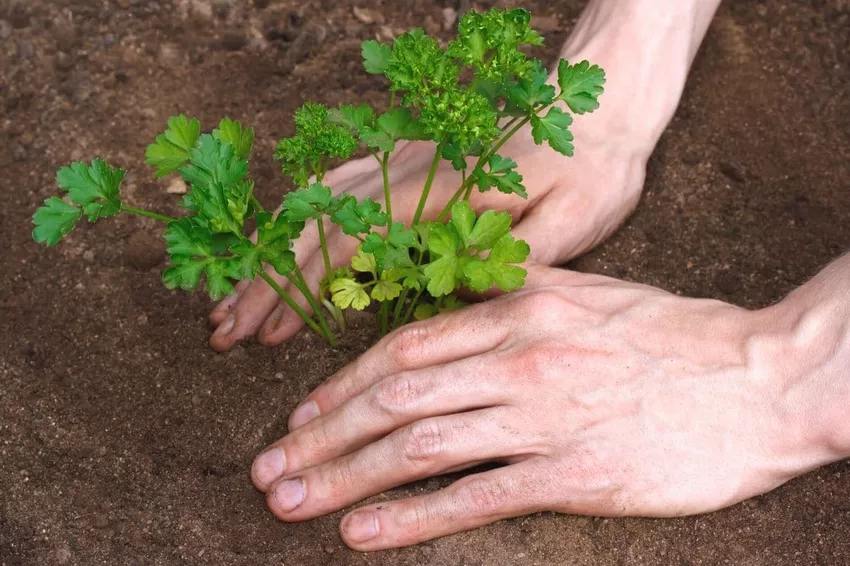
Parsley is a popular culinary herb that adds a spicy note to many dishes. Patience and sensitivity are required when growing, especially when it comes to germination. Preparing the parsley can make sense here.
In a nutshell
- Parsley (Petroselinum crispum) is a dark germinator
- germinates very slowly and irregularly
- Germination time for direct sowing in spring at least four weeks
- Due to the unfavorable conditions, it is recommended to bring them forward in spring
- in the case of late sowing in August, pre-drawing can be dispensed with
Prefer parsley - timing
Parsley (Petroselinum crispum) can be sown in pots practically all year round, because the necessary germination conditions are easier to use indoors than outside in the bed. If the spicy herb is to be grown in the garden as early as possible, parsley can be preferred, for example on the windowsill. This means that you can usually start as early as March.
manual
For the best possible success rate, you should pay particular attention to good quality seed. Parsley can germinate for up to two years. The older the seed, the lower the germination rate. Small pots, bowls, a standard mini greenhouse or flower boxes are suitable as seed containers. To speed up germination, it makes sense to soak the seeds in lukewarm water for a few hours before sowing. However, this is not absolutely necessary.

- Fill the growing containers with nutrient-poor growing soil
- Keep the surface of the substrate as level as possible
- distribute pre-germinated or untreated seeds on the substrate
- cover about an inch with soil
- Parsley germinates in the dark and initially does not need any light
- Press lightly and then moisten well
- ideally using a standard spray bottle
- put everything in a warm place
- do not expose to direct sunlight
- Keep the soil evenly moist throughout the germination period
- at temperatures between 20 and 25 degrees, germination within 14 days
- can sometimes take a little longer
- constant substrate moisture and temperatures provided
Even if the substrate only dries out for a short time, the seedlings can die. As soon as the first seedlings appear, they can be placed in a slightly cooler place with temperatures around 15 degrees. From a size of five to eight centimeters or when they have developed the first real leaves in addition to the cotyledons, you can transplant the young seedlings to their final place in the garden. Provided there is no longer any risk of frost. The floor should now be at least eight degrees warm.
Plant preferred parsley
In the garden, Petroselinum crispum grows in light to partially shaded locations, although it thrives best in partial shade. A permanently sunny place should be avoided. The soil should be deep, permeable and humus-rich as well as nutrient-rich so that excess irrigation or rainwater can drain off well. A neutral pH between 6.5 and 7.5 is good. In the best case, the soil has already been enriched with compost or another organic fertilizer in the autumn.
- draw rows for planting
- at intervals of 20-30 cm
- dig small planting holes
- Distances here about ten centimeters
- put some organic fertilizer in each planting hole
- Be careful when removing the seedlings
- Roots very tender and sensitive
- Put the plants as deep as before in the pot
- Press the soil down lightly and water carefully
When growing parsley, care should be taken not to plant it in the same location every year. The reason for this is the incompatibility with itself and other umbellifers such as dill, fennel, carrots or celery. Therefore, a cultivation break of at least four to five years should be observed. Good planting partners in the garden include tomatoes, spinach, radishes and chard. Sufficient distance should be kept from lettuce.
Tip: If you prune the fine roots minimally when transplanting, the parsley will branch better.

Further care
Once planted, Petroselinum crispum requires little care. This usually limits them to regular but weather-dependent watering and the removal of weeds. This kitchen herb needs a lot of moisture, but does not tolerate waterlogging. In order to keep the weeds in check, it is important to loosen the soil regularly but carefully so that weeds cannot spread in the first place.
You can do without additional fertilizer if you applied compost or another organic fertilizer when planting. Since this herb is biennial, it should be protected from severe frost with an insulating layer of brushwood or fleece, especially in rough locations, and watered moderately on frost-free days.
Tip: By the way, parsley seeds are poisonous, so they should not be eaten.
frequently asked Questions
Why isn't the parsley sprouting?Preferring parsley is usually not a problem, provided the conditions are right. If the seeds don't germinate when you prefer them, this can e.g. because they are of poor quality or already too old. Other reasons could be too dry or even dried out soil, an unfavorable location or extreme temperature fluctuations.
Should you generally prefer parsley?Especially in spring, when the germination conditions outdoors are not yet optimal, parsley can be preferred. You can usually do without it when sowing later in the summer. Pre-germinating the seeds is more advisable if you want to harvest as early as possible.
When can you harvest early parsley?Parsley, which is brought forward from March, can often be harvested in late spring.